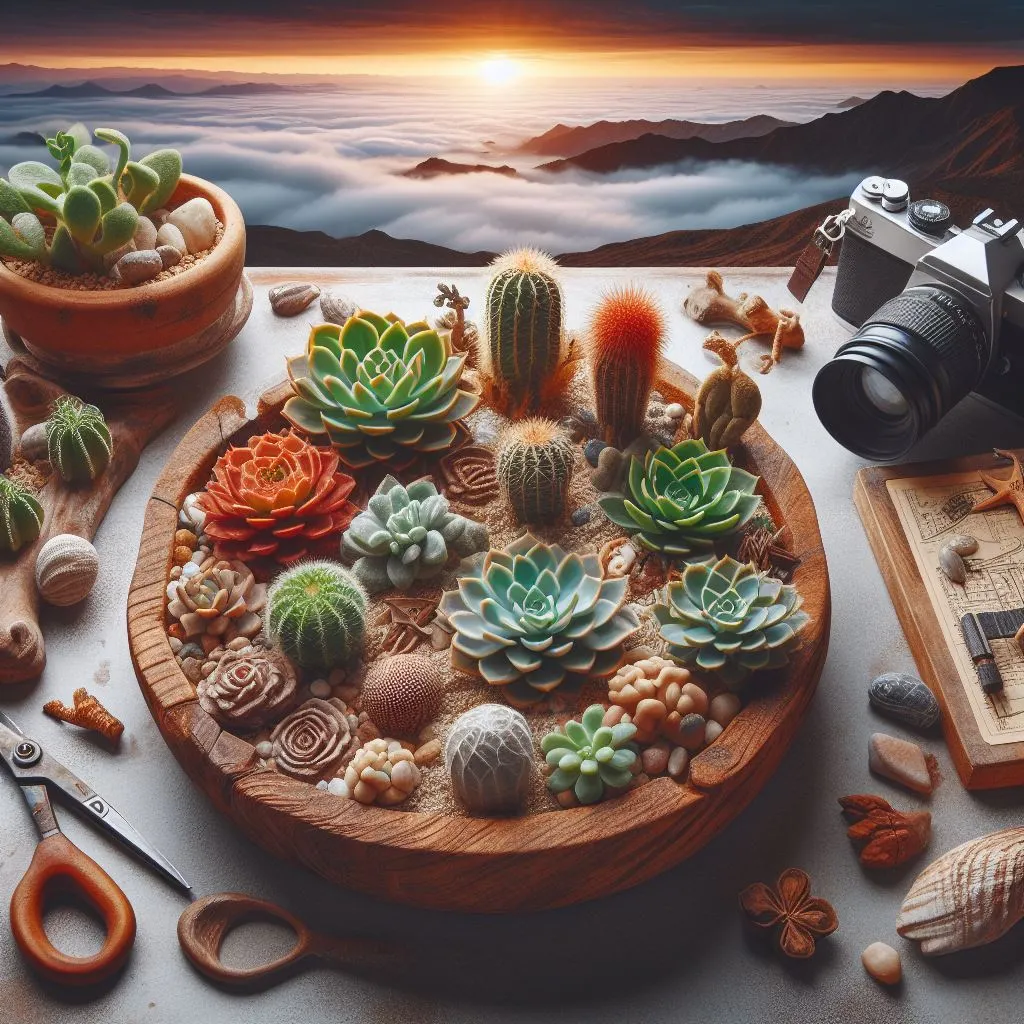Exploring Different Species of Desert Succulents
1. What are Succulents?
Succulents are fascinating plants that have adapted to survive in dry and arid environments by storing water in their leaves, stems, or roots. This unique characteristic allows them to thrive in places where water is scarce, such as deserts. Succulents come in various shapes, sizes, and colors, making them popular choices for indoor and outdoor gardens alike.

These plants have thick and fleshy parts that can hold a significant amount of water. Unlike other plants that need frequent watering, succulents can go for long periods without rainfall, making them low-maintenance and suitable for busy plant enthusiasts.
2. Desert Habitats
Deserts are harsh environments characterized by extreme temperatures, limited rainfall, and sandy or rocky terrain. Despite these challenges, deserts are home to a wide variety of plant and animal species that have adapted unique survival strategies.
Plants in deserts, including succulents, have evolved remarkable adaptations to thrive in these unforgiving conditions. They have developed mechanisms to conserve water, such as specialized tissues that store water and reduce moisture loss through transpiration. Additionally, many desert plants, including succulents, have adapted to withstand intense sunlight and temperature fluctuations.
3. Types of Desert Succulents
Let’s explore some of the most common and intriguing species of desert succulents:
- Cacti: Cacti are perhaps the most iconic desert succulents known for their spiny stems and unique shapes. These spines not only protect the plants from herbivores but also help reduce water loss by creating a barrier against evaporation.
- Aloe Vera: Aloe vera is a popular succulent known for its medicinal properties. The gel found in its thick, fleshy leaves has soothing and healing properties, making it a staple in skincare products.
- Jade Plant (Crassula ovata): The jade plant is a hardy succulent with thick, glossy leaves that store water efficiently. It is often grown indoors and is believed to bring good luck and prosperity in some cultures.
- Snake Plant (Sansevieria): Also known as mother-in-law’s tongue, the snake plant is prized for its tall, sturdy leaves that can survive in low light conditions. Its ability to thrive with minimal care makes it a popular choice for beginners.
These succulents showcase the diversity and resilience of plants adapted to arid environments.
4. Adaptations of Desert Succulents
Desert succulents have evolved remarkable adaptations to survive in their challenging habitats:
- Water Storage: Succulents store water in specialized tissues such as their leaves, stems, or roots. This water reservoir allows them to survive extended periods of drought.
- Reduced Leaf Surface: Many desert succulents have reduced leaf surfaces or modified leaves that minimize water loss through evaporation. This adaptation helps them conserve water during hot and dry conditions.
- Sun Protection: Some succulents have developed strategies to protect themselves from intense sunlight. These may include thick waxy coatings on leaves or spines that provide shade and reduce heat absorption.
5. Growing Succulents at Home
Growing desert succulents at home can be a rewarding experience. Here are some tips to help you cultivate healthy succulent plants:
- Choose the Right Pot and Soil: Select a well-draining pot with drainage holes to prevent water from pooling at the roots. Use a specialized succulent or cactus potting mix that promotes good drainage.
- Watering Tips: Succulents prefer infrequent but deep watering. Allow the soil to dry out completely between waterings to prevent root rot. In winter or cooler months, reduce watering frequency as succulents enter a dormant phase.
- Sunlight Requirements: Place your succulents in a bright location with indirect sunlight. While they love sunlight, intense midday sun in hot climates can scorch their leaves. Rotate your plants periodically for even growth.
6. Fun Facts about Desert Succulents
Discover some intriguing facts about these resilient plants:
- Global Distribution: Desert succulents are found in arid regions across the globe, from the deserts of North and South America to Africa, Australia, and Asia. Each region boasts unique succulent species adapted to local conditions.
- Survival Strategies: Some desert succulents can survive extreme conditions by going into a dormant state. During droughts, they reduce metabolic activity and conserve water until conditions improve.
7. Conclusion
In conclusion, exploring different species of desert succulents reveals the remarkable adaptations and beauty of these plants. Whether you admire the intricate patterns of a cactus or enjoy the soothing properties of aloe vera, desert succulents offer a glimpse into nature’s resilience and ingenuity.
By understanding their unique needs and providing proper care, you can cultivate thriving succulent gardens both indoors and outdoors. From choosing the right potting mix to mastering watering techniques, each step contributes to the success of your succulent journey.
So, embrace the diversity of desert succulents, experiment with different species, and appreciate the wonders of nature’s botanical treasures thriving in the arid landscapes of our planet. Happy succulent gardening!